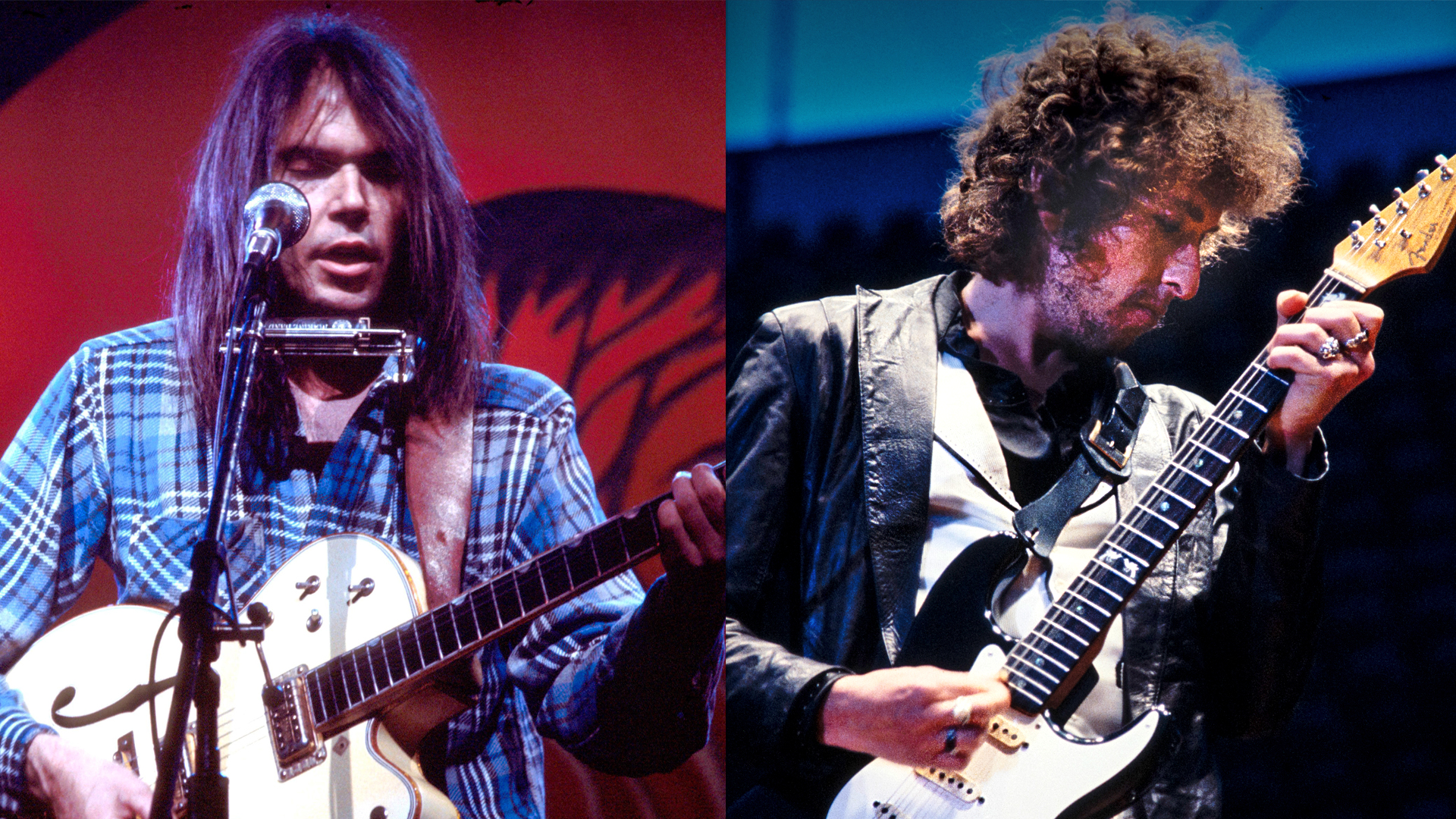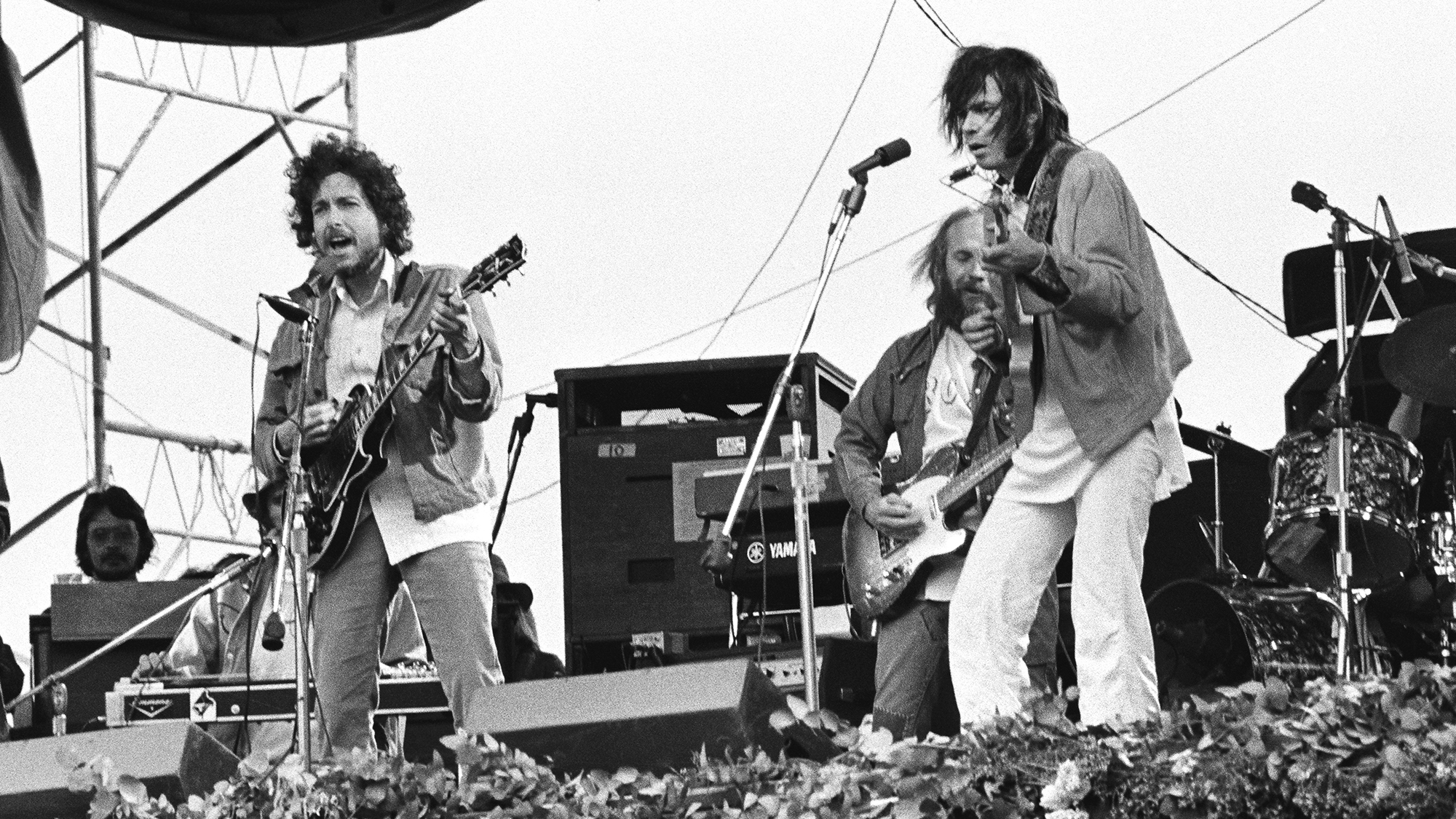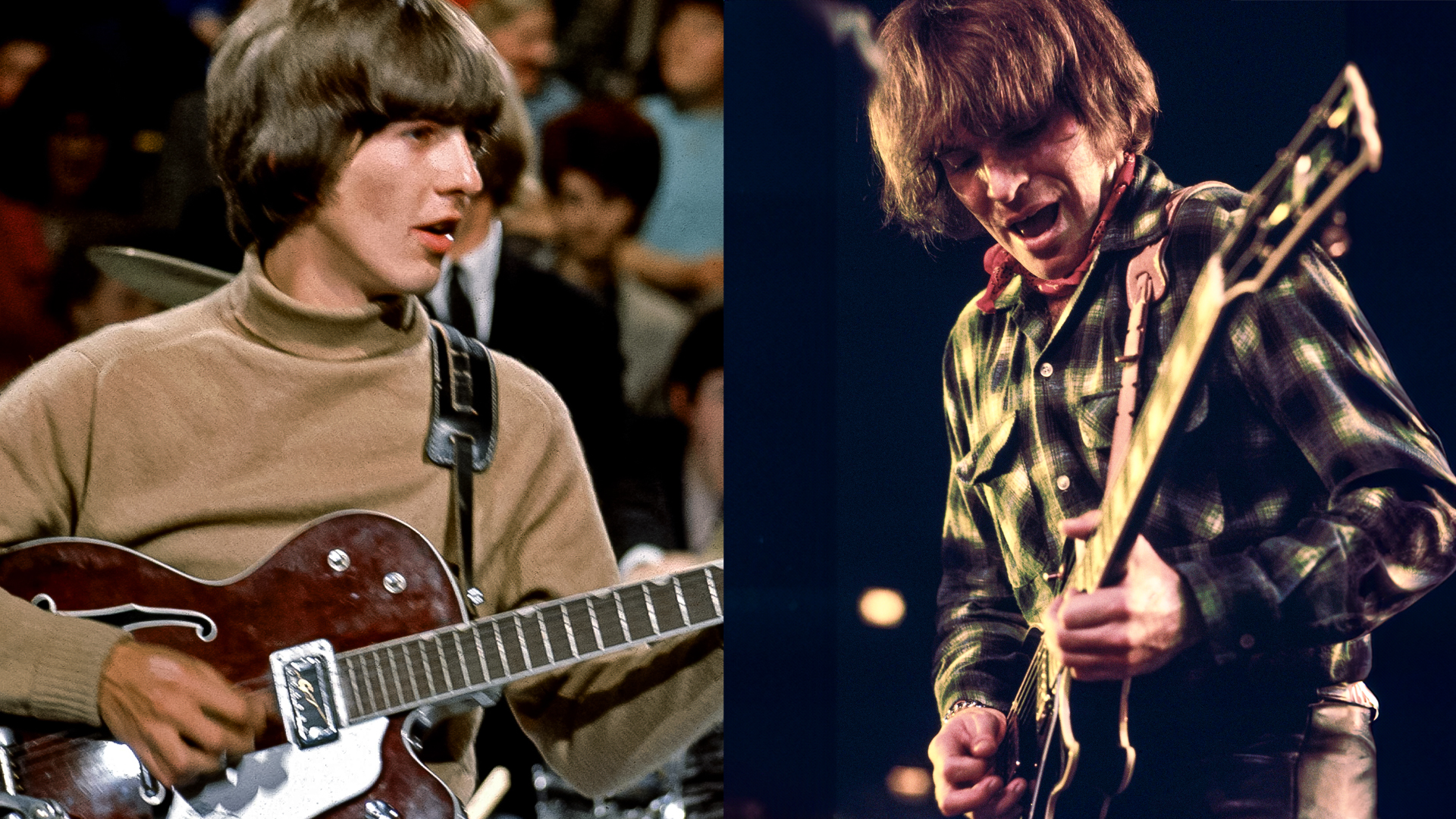“I used to hate it when it came on the radio." Bob Dylan on the Neil Young song that got under his skin — for the most personal reason of all
Of all the Bob Dylan imitations over the years, this one bothered him the most

There have been plenty of singers who sound like Bob Dylan, whether they intended to or not. Bruce Springsteen has channeled Dylan’s singing-talking style throughout his career, and Mark Knopfler has had the folk-poet’s gruff hipster inflection down since he recorded “The Sultans of Swing” with Dire Straits.
Tom Petty, Dylan’s friend and cohort in the Travelin’ Wilbury’s, could nail the higher end of Dylan’s vocal style, with his pinched and slightly flat way of launching the words out of his throat.
But the best mimic of all might be Gerry Rafferty, whose laconic delivery on the 1972 Stealer’s Wheel hit “Stuck in the Middle With You” left many convinced it was a Dylan song. With its steady strummed acoustic guitars and slinky slide lines, it sounds like a track that might have come out of the folk icon’s late-’60s/early ’70s period.
Considering all the above, how is it possible Bob Dylan got his nose out of joint over Neil Young’s plaintive vocals on a classic hit from Harvest, his 1972 acoustic folk turn?
The song was question: “Heart of Gold,” Young’s sole number one U.S. single.
Asked by Spin magazine if he disliked hearing others imitate his unmistakable style, Dylan didn’t hesitate.
“The only time it bothered me that someone sounded like me was when I was living in Phoenix, Arizona, in about ’72, and the big song at the time was ‘Heart of Gold’,” Dylan replied.
All the latest guitar news, interviews, lessons, reviews, deals and more, direct to your inbox!
I think it was up at number one for a long time, and I’d say, ‘That’s me. If it sounds like me, it should as well be me.’”
— Bob Dylan
“I used to hate it when it came on the radio. I always liked Neil Young, but it bothered me every time I listened to ‘Heart of Gold.’ I think it was up at number one for a long time, and I’d say, ‘That’s me. If it sounds like me, it should as well be me.’”
A singer’s voice is their signature, and Dylan’s is like no other. So it figures that it bothered Dylan so much — enough that he spoke about it publicly.
But is it possible that he was so irked by Young’s song that he wrote a tune in response?
That’s what Dylan biographer Clinton Heylin claimed in a 2009 interview with Rolling Stone. If Heylin is correct, then Dylan’s “Forever Young” is his rebuttal to Young’s “Heart of Gold.”

“Dylan’s saying he’s forever Young, which is a dig at Neil for imitating Dylan,” Heylin suggested.
The timing almost seems to work. “Heart of Gold” came out in January 1972; Dylan first demoed “Forever Young” in June 1973 while in New York City. A year and a half seems a bit long for to harbor a grudge, but if Dylan did write it as a riposte, perhaps he ultimately decided the song was too good to leave buried in his back pages.
He’s the master. If I’d like to be anyone, it’s him.”
— Neil Young
For the record, both men are friends and fans of each other’s work. Young spoke warmly of Dylan in a 2005 interview with Time, saying, “He’s the master. If I’d like to be anyone, it’s him. And he’s a great writer, true to his music and done what he feels is the right thing to do for years and years and years.”
Then again, he owed it to Dylan, who gave Young the honor of appearing in one of his songs, “Highlands,” from 1997: “Well, my heart’s in the Highlands / I can only get there one step at a time / I’m listening to Neil Young, I gotta turn up the sound.”
Young repaid the favor again a few years later in “Flags of Freedom,” writing, “Their bond is everlasting / Listening to Bob Dylan singin’ / In 1963 / Watchin’ the flags of freedom flying.”
Speaking of Young, he recently revealed that he found and purchased the Gretsch 6120 electric he played years ago in Winnipeg with his first group, the Squires. He was aided in his search by Randy Bachman, his pal from his youth, and the internet sleuth who helped the Guess Who/BTO guitarist find his own Gretsch 6120 that was stolen in the 1970s.
Christopher Scapelliti is editor-in-chief of GuitarPlayer.com and the former editor of Guitar Player, the world’s longest-running guitar magazine, founded in 1967. In his extensive career, he has authored in-depth interviews with such guitarists as Pete Townshend, Slash, Billy Corgan, Jack White, Elvis Costello and Todd Rundgren, and audio professionals including Beatles engineers Geoff Emerick and Ken Scott. He is the co-author of Guitar Aficionado: The Collections: The Most Famous, Rare, and Valuable Guitars in the World, a founding editor of Guitar Aficionado magazine, and a former editor with Guitar World, Guitar for the Practicing Musician and Maximum Guitar. Apart from guitars, he maintains a collection of more than 30 vintage analog synthesizers.
